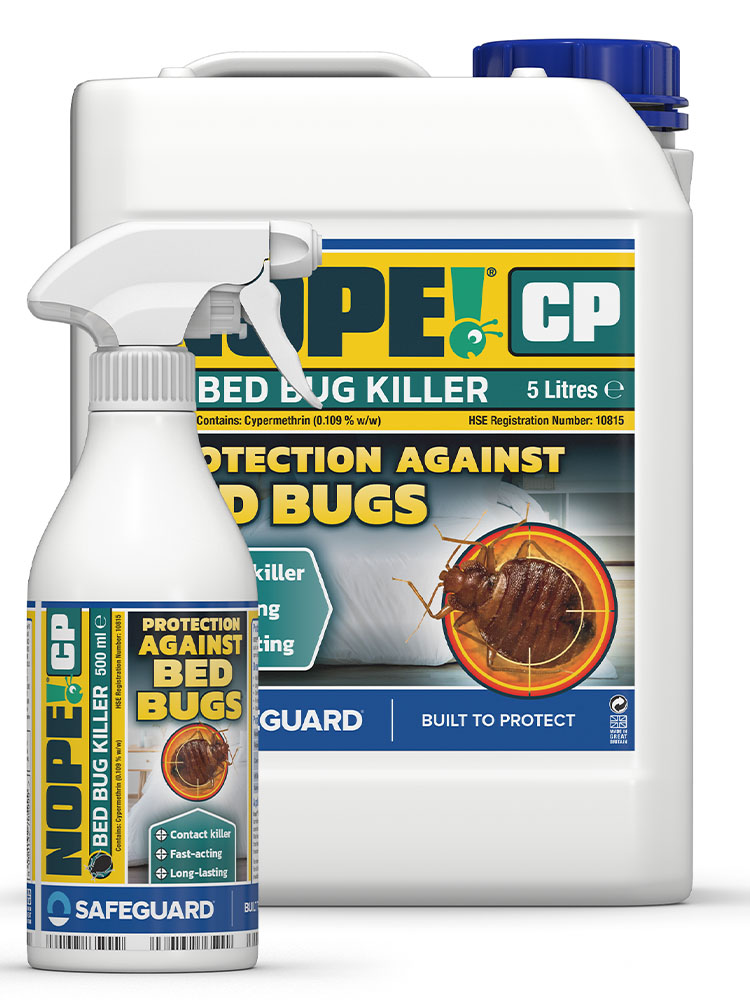How to get rid of Bed Bugs Guide
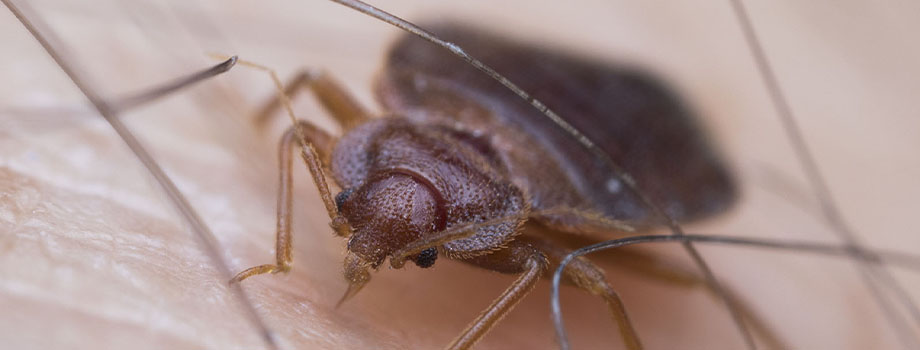
Of all the common pest infestations in the UK, bed bugs are by far the most disruptive to everyday life. Bed bugs, also known as Cimex lectularius and Cimex hemipterus, invade bedrooms to drink human blood. Bed bug bites may cause slight reddening of the skin, itchiness and mental anguish. At their worst, they can cause painful blisters. Read on to find out how to identify, prevent and how to get rid of bed bugs.
- How do you get bed bugs?
- What do bed bugs look like?
- How do I know if I have bed bugs?
- Bed bug feeding patterns
- What do bed bugs feed on?
- The bed bug lifecycle
- How do bed bugs get around?
- How can I prevent bed bugs?
- Clean. Eliminate. Prevent. How to get rid of bed bugs
- Bed bug pest control options
Frequently Asked Questions
-
How do you know you’ve got bed bugs?
Look out for bed bug bites on your lower legs and arms – anywhere exposed during sleep is a risk. Look for small brown and red stains on pillows, duvets and mattresses and dead or live bed bugs. -
What is the main cause of bed bugs?
Although poor hygiene can make an infestation harder to remove, it is not the main cause of bed bugs. Bed bugs usually get into your home through items of clothing and furniture brought into the home. -
What instantly kills bed bugs?
A cypermethrin-based spray like NOPE! CP kills bed bugs, larvae and eggs on contact. A steam treatment can also be applied to furniture to kill the various stages of the bed bug lifecycle. -
Does poor hygiene cause bed bugs?
Bed bugs feed on people, not dirt. They get into the home by travelling there – once they’re in a house or flat, it does not matter how clean or dirty the home is – just that there is a regular supply of blood to feed bed bugs. -
Where do bed bugs hide on your body?
Bed bugs do not live on human bodies – they clamber on them for a blood meal and then return to their harbourages. Look for bed bugs in cracks and crevices in furniture as well as among clothes and luggage. -
What to do if you slept in a bed with bed bugs?
Before you get home, ensure you quarantine the clothes you wore and any luggage you may have. Place everything in a fully-enclosed plastic bag. Wash and dry them on a high heat. Check and vacuum all small and hidden areas like folds, collars, creases and pockets. -
Do bed bugs go away when you wash sheets?
Washing sheets at a high temperature will kill any bed bugs present in the linen. However, if bed bugs are in your sheets they will also be elsewhere in your bedroom and home. Keep the washed sheets in a plastic bag away from the bedroom and investigate for further signs of infestation. -
How bad are bed bugs in the UK?
Bed bugs are a very common pest problem in the UK, and they’re very difficult to get rid of. Late summer (August-September) is a busy time for bed bug pest control, after people have returned from holiday and the infestation has established itself in your home.
</details -
Do I have to wash everything if I have bed bugs?
All clothes and fabrics that are close to the site of infection should be washed and treated thoroughly. It is not necessary to empty the wardrobe unless you have spotted the signs of bed bug infestation. -
Do bed bugs bite every night?
Each bed bug only needs to feed once every week or so. However, they reproduce rapidly and so you may suffer more than one bed bug bite every night depending on the size of the infestation.
How do you get bed bugs?
Bed bugs cannot fly or even jump like fleas. Instead, bed bugs rely on us to get around.
- Like Ants, they get around on foot.
- They commonly infest new areas by being carried in through clothing, furnishings and furniture.
- They flourish in dark areas.
- Look inside mattresses or wall cracks near bedding and furnishings.
Bed bugs are resilient. They can survive most climates and are found around the world. They can also survive a long time without feeding, so can persist and repopulate after a treatment that seemed successful.
Simply put, you get bed bugs by unwittingly bringing them into the home. They may:
- Travel inside clothes after hotel visits
- Travel inside second-hand furniture or furnishings
- Lay eggs in clothing or furnishings that are then carried into the home
- Enter through building defects such as failed window seals or ceiling ducts
- Enter the home through wild animals like birds
Although bed bugs feed on humans, they do not live on them in the same way that fleas or head lice can.
Entomologists are not entirely sure exactly why bed bug infestations are on the rise worldwide, but possible reasons are increased use of international air travel and increases in second-hand furniture sales, as well as changes in types of pesticides used by pest control companies.
What do bed bugs look like?

The common bed bug is also known as Cimex lectularius. It is the primary UK bed bug species and averages around 5mm long and 2mm wide. They have rounded bodies and smaller rounded heads with two antennae protruding from the top. They are reddish-brown in colour with vestigial wings that cannot function.
If they have recently eaten, bed bugs take on a redder colour and temporarily look swollen.
Bed bug eggs can be a challenge to spot. They are 1mm in length. Look out for white-to-translucent pellets (not an easy task on a mattress). Bed bugs lay their eggs in cracks and crevices where they are likely to be undisturbed. Unlike some pests, bed bugs do not undergo radical metamorphosis like moths.
Bed bugs experience simple metamorphosis. Instead of undergoing radical biological changes, bed bugs shed their skins to grow progressively larger. Each stage (of which there are 5) takes about a week to complete, assuming the bed bug has regular access to human blood.
How do I know if I have bed bugs?
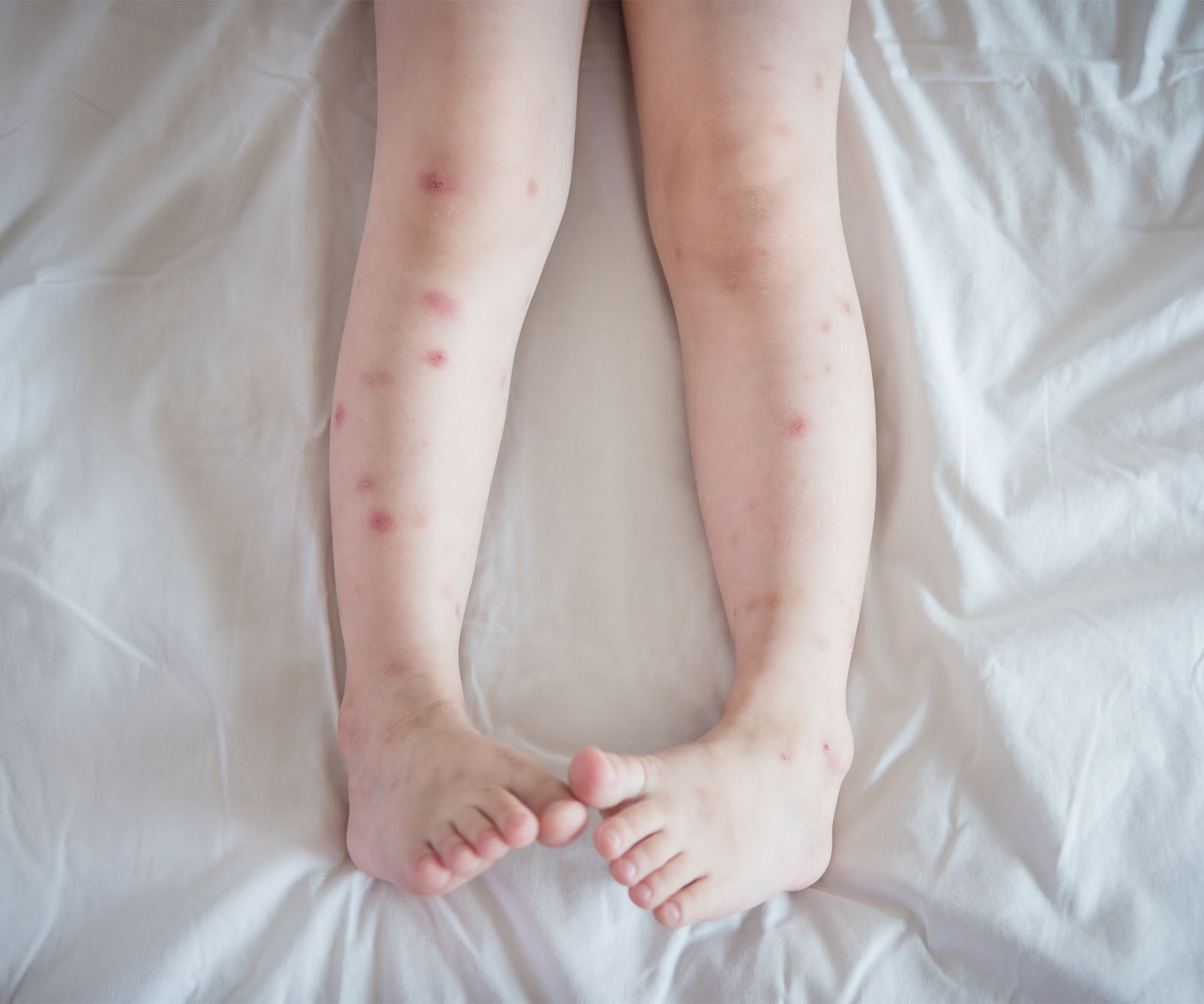
Bed bugs are a disruptive pest and there are many signs of an active infestation. The most immediately noticeable are marks on the body. Look out for:
- Flat, red spots
- Blisters that may itch
- Red rash in areas of multiple bites
- Small areas of pronounced bleeding
Apart from the obvious physical effects, look out for these tell-tale signs of bed bug infestation:
- Clusters of dark, dotted stains on sheets, mattresses, bed frames and nearby areas. This is digested blood
- Moulted bed bug shell casings. These can be mistaken for dead bed bugs. They are light brown in colour, hollow and translucent
- An otherwise unexplainable musty and mouldy smell
- Live or dead bed bugs

Bed bugs are smaller and there are many places in the structure of a bed for them to hide. Make sure to regularly change bedding and check thoroughly around the bed frame, under the mattress, around mattress seams, around and in any small nooks and crevices near the bed. Don’t forget the headboard too.
Bed bugs cluster together in harbourages. As they are nocturnal, they seek areas where they won’t be disturbed while they sleep. They often find refuge within mattresses and in wall spaces.
Bed bugs can fit in incredibly tight spaces. If you can slide a piece of cardboard under it, a bed bug can find a home there! Bed bugs avoid light and are rarely seen out in the open during the daytime.
Bed bug feeding patterns
Bed bugs seek out humans to feed at night time. Their harbourages are often close to beds and sofas to facilitate regular feeds. As bed bugs can reproduce relatively quickly, people who live in a beg bug-infested home can suffer many bites in a single night.
Bed bugs are relatively good at staying concealed. Even if you cannot find bed bugs during the daytime, they will emerge from their harbourage at night in search of food.
As well as the physical health risks involved, bed bug bites can also be mentally distressing. An active bed bug infestation can also disrupt healthy sleep patterns.
What do bed bugs feed on?
Bed bugs feed on warm-blooded mammals. As well as human blood, they have also been known to drink from animals such as wild birds, bats or domestic pets like dogs and cats. Bed bugs can survive for over 2 months without feeding, but need fresh blood for each stage in their lifecycle.
The bed bug lifecycle
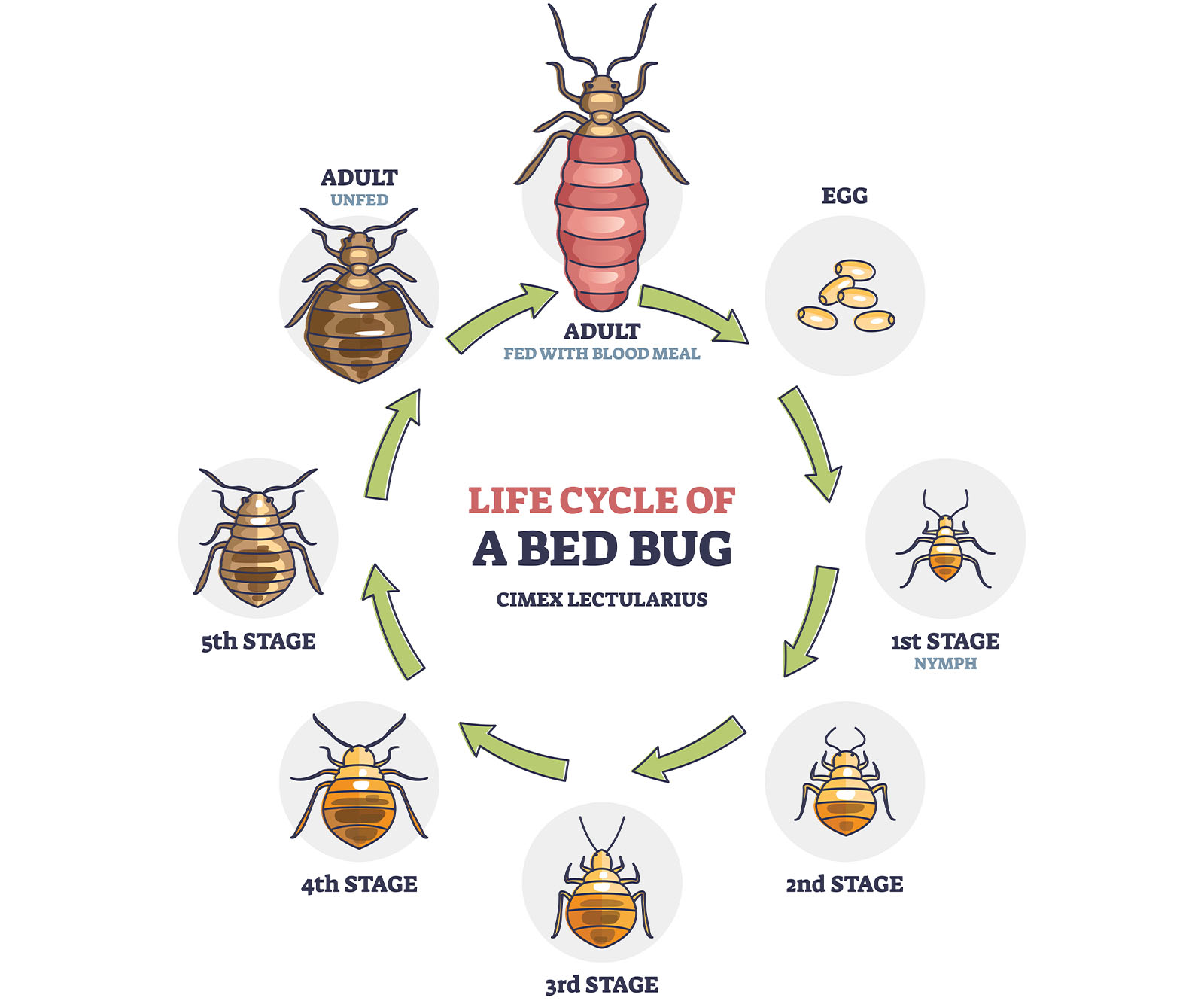
The bed bug lifecycle is relatively complex. It takes 5 phases of simple metamorphosis for a Nymph to grow into a fully mature adult. A bed bug must eat one meal of blood for each stage.
Once a bed bug is fully grown, it will attempt to reproduce. A female bed bug may lay as many as 500 eggs throughout its life, at a rate of up to 10 every 24 hours. On average, bed bugs live about 5 months. This may be more or less depending on the environment.
How do bed bugs get around?
Bed bugs cannot jump like fleas or fly like carpet beetles. Bed bugs spread by crawling. They frequently infest new places by hiding within soft furnishings as they travel from place to place. Human travel enables the spread of bed bugs, which is why bed bug infestation and hotels often go hand in hand.
How can I prevent bed bugs?
Despite common misconceptions, a bed bug infestation is not a sign of poor hygiene practices. Because bed bugs catch rides on clothes, furniture and luggage, the best way to prevent a bed bug infestation is to minimise the movement of these items from home to home.
Avoid:
- Sharing luggage and furniture
- Inspect second-hand furniture thoroughly before bringing it into your home
Always:
- Regularly vacuum the home
- Avoid clutter in bedrooms
Here are some tips for keeping bed bugs away when you go on holiday:
- Check your hotel room before you settle in. Check bedding, mattresses, in and around sleeping areas for the telltale signs of bed bug infestation (dark, dotted stains, musty smells, bed bug casings or live bed bugs)
- Keep clothes and luggage off the bed and floor
- Back at home, keep holiday luggage away from your living space
How to get rid of bed bugs
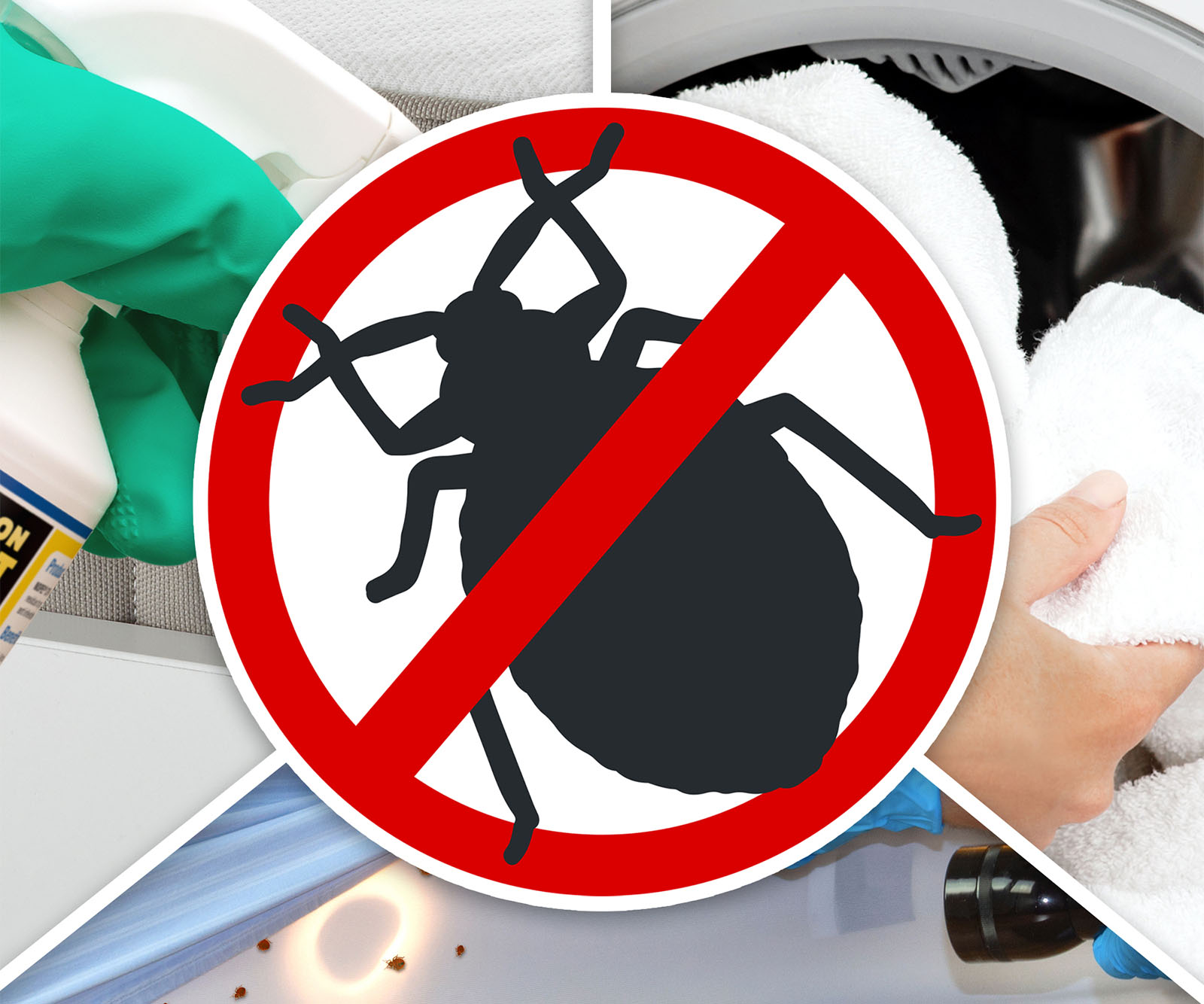
Bed bugs are notoriously hard to get rid of.
Despite the difficulty of the task, removing a bed bug infestation from your home is not impossible.
Each individual bed bug does not need to feed very often. One blood meal goes a long way, so bed bugs spend a lot of their time resting.
As each bug is so risk-averse and lives for so long, it can be difficult to treat the infestation fully.
Once you’ve correctly identified that bed bugs are in your home, here’s a 3-step pest control solution to getting rid of bed bugs.
Clean
- Shake all bedding and clothes outside of the home to remove eggs, moulted casings and dead bed bugs. Scrub corners with a coarse brush to fully remove all bed bug debris
- Wash all bedding and clothes in the affected room at a high temperature of over 60°C
- Vacuum all areas of suspected bed bug activity. Take special care to vacuum along mattress edges, under and around beds. Don’t forget to reach skirting boards or anywhere bed bugs could be hiding
Eliminate
NOPE! CP Bed Bug Killer Spray is:
- Solvent-free
- Fast-acting
- Long-lasting
Prevent
Ensure bed bugs don’t get in your home again.
- Repair cracks in walls, skirting boards and any small defect a bed bug could infest
- Regularly vacuum mattresses and bedding. Pay particular attention to seams and corners
